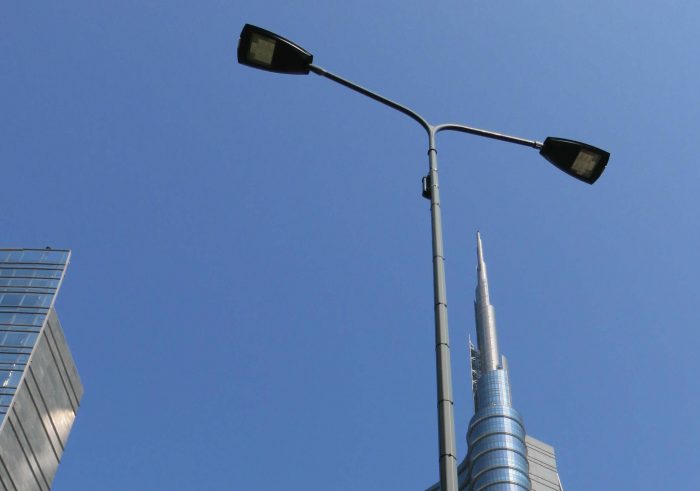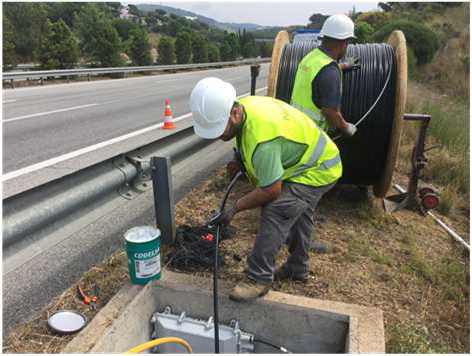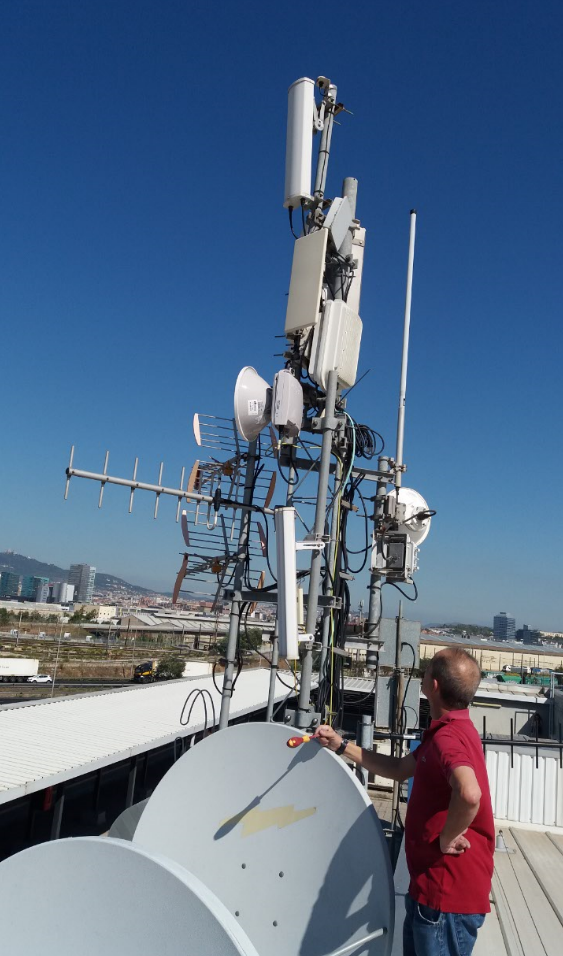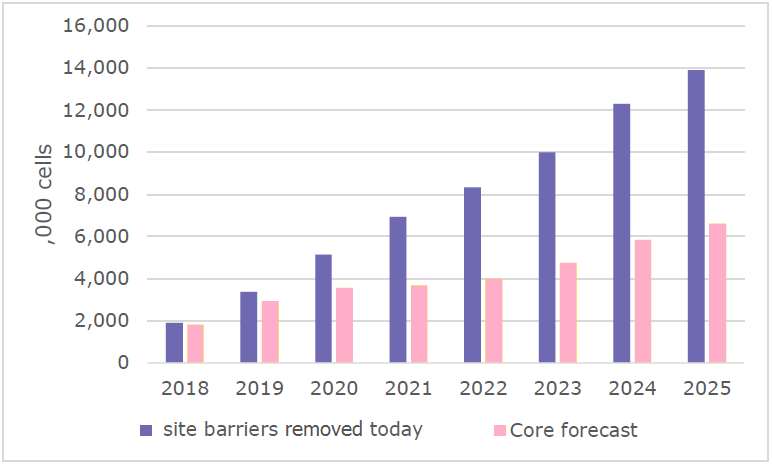
Best practices and rationalisation in the 5G mobile networks deployment
By David Pujals

5G is the fifth generation of mobile internet connectivity that stands out for its greater bandwidth, ultra-reliable communications, low latency and massive communications Machine to Machine. It will enable a lot of future applications in different sectors such as education, health, mobility, industry and leisure. It is also expected to reduce the digital gap, referring to the differing access to information between the ones who have a good internet connection and those who do not. Moreover, 5G deployment is expected to foster the industrialization processes by empowering the key reference businesses in every country.
One of the main features will be the virtualization and segmentation of the network (thanks to network slicing capabilities) that will enable the creation of different segments of the network, another important feature will be edge computing that will allow placing more computing power near the end users to streamline real time applications.
A specific frequency spectrum is going to be used for eMB services between the users and the antennas, in the commonly known as Radio Access Network (RAN). 3.4 – 3.8 GHz and 26 GHz are the 5G frequency bands going to be used in dense urban zones other lower band frequencies such as 700Mhz due to their better penetration and coverage footprint are expecting to be used for other scenarios[1].
In this scenarios, there are two types of antennas: macro cells and small cells.
In one hand, macro cells are the current 3G and 4G eNodeB (base stations already deployed mostly over rooftops in urban areas) that can also be adapted to be used in 5G. On the other hand, the small cells are designed for specific urban areas with a very high density of population. The inconvenient is that they present a short range up to 50-300m in free space (empty of hurdles).
The mentioned antennas, need to be connected to the “core” side of the telecommunication networks, also known as the “backhaul” of the network. This connectivity can be provided through the specific installation of radio links or by the deployment of FTTA (Fibre To The Antenna).
FTTA connections are much more efficient but have a higher cost due to the need of its deployment. In Spain there are a lot of unused deployed optical fibre connections, however, in the majority of European countries it will need to be deployed yet. Furthermore, there is also a disposal of auxiliary equipment that offer extra functionalities to the network such as the Mobile/Multiaccess Edge Computing (MEC).
Nowadays, there are 114 pilot tests in the European Community, Spain is leading this list with a number of 18[2].
In the following sections, different considerations about 5G roll-out will be analysed in more detail, with some possible implications.
NETWORK MANAGEMENT MODEL
As described above, two different types of antennas are expected to be used: Macro cells, focused on giving coverage in large areas (urban, sub-urban and rural) and small cells, used in high dense urban areas, that should be integrated in the urban environment in order to reduce the impact of so many installed devices. In dense and congested areas it would be required from 4 to 10 antennas to match the current coverage of a current 4G macro cell[3]. All across Europe it is estimated to deploy between 200,000 and 500,000 new small cells[4]. In case each operator deploys their own network the number of antennas would need to be multiplied by a factor of 3 or 4 (depending on the number of operating MNOs)[5].
5G network could be deployed by each operator on their own or by making use of a shared network infrastructure. Both options have their benefits, for instance if the deployment is done by each operator individually, the network technology would be more innovative due to its competition and operators would have full direct control in the performance of their network. However, it would lead to a higher densification of the antennas and in case of not having enough investment capacity it might perpetuate the digital gap. Costs will be higher and depreciation periods longer. On the other hand, if it is a shared network it would have more benefits than just reducing costs, these would be the improvement of quality and continuity of the coverage (the deploying company would only be focused in a search for the best network performance, as it is its core business, and no other interests will prevail). Public space would be more efficiently used and less intermediaries would appear. Nevertheless, a shared network business model should be created between the operators. One model for the management and protection of the personal data and the differentiation in the quality of service should be created as well.
TERRITORY INTEGRATION
The infrastructure integration will depend on how much demand is estimated for each specific location. High demand would mean integrating a dense network of small cells capable to give a continuous quality service using high frequencies (3.5 GHz and 26 GHz) in order to achieve a huge capacity of connections in short ranges. On the contrary, if less density is needed a macro cell could cover a bigger extension with the same quality of service. Small cells are located as close as possible to the end users in order to offer a proper service. Due to they are running in high frequency bands, have a reduced size and low power no longer distances can be covered, besides the effect that high frequencies are easily weaken by urban furniture and street vegetation, the small cells cannot be located in rooftop emplacements.

A deployed Small Cell in Barcelona
So, the main idea of infrastructure operators is to adapt and hide the small cells into the urban furniture or even designing the future’s furniture with this antennas already integrated. The separation between consecutive antennas must ensure enough capacity for the network and also its continuity through all the territory.
In rural environments, macro cells will be used as much less density and longer distances are required. This integration would not differ a lot from a 4G deployment.
The government reckons that the expansion of optical fibre would be the base for the arrival of 5G in these domains. Together with the Mobile Edge Computing sites, Macro and Small Cells sites will need to be much better connected with fibre optics. Although, this is something that will make more laborious and expensive the 5G rollout plan especially as the number of connected antennas is going to be highly increased.

Process of optical fibre deployment
PROCEDURE FOR THE DEPLOYMENT
An important point for managing a satisfying integration in society is making a transparent communication plan where informing about the deployments and features of the new antennas. Many entities play an important role in this business. The administration has to boost the deployment of the 5G network integrated in the territory and achieve a balanced deployment. Social entities should be in charge of monitoring the current status of the network. Another kind of entities such as the promotion and research entities of the ICT sector may try to help the administration in the process of adapting the legislation by offering some tools to the administration in the deployment of 5G. These ICT entities may also look up for instruments to promote the network sharing and relocate the infrastructures’ cost to the OTT companies, they may also identify the city points where the demand is higher than expected, in order to ensure the maximum connectivity in all the territory. Infrastructure’s operators and equipment providers should promote a model with less impact by enhancing and camouflaging the equipment in the street environment. Lastly, MNOs should promote a policy framework in order to speed up the rollout of the new 5G technology.
Currently in 4G, operators have a lot of locations where deploying their network infrastructure in the private domain, leaving the municipalities outside of the decision making in the technology roll out plans. Conversely, in new 5G deployments, it is estimated that the need of higher concentration of antennas much closer to the end users, will lead the operator companies to make use of public domain (basically street furniture such as lampposts, bus stops, etc.) as well. So, this may strengthen the influence of administrations in the technology deployments. This influence will enhance designing more efficient schemes in order to perform a more reasonable deployments. It is also expected that the use of a neutral operator (being either a public entity or not) can speed up the availability and the deployment of any new standard, as one only entity can perform the communications and bureaucracy with the administration and all other involved actors much more efficiently than several companies altogether with different interests. Furthermore this neutral entity will try to do its best to get benefits for the overall deployment instead of having a single business interest.
Operators will have to obtain licenses from the administration and for that they will be required to camouflage their antennas within the environment and to take different actions in order to tackle some important issues: Firstly, the locations of the equipment would be required to combine dense and profiting places with other less profiting places (i.e. rural or sub-urban areas) to avoid creating a technological gap in these worse connected zones. Another required action would be identifying low covered zones with higher connectivity demands and then acting in consequence to provide the most suitable services. Administrations could have the choice to create an inventory of network resources (with the help of MNOs) in order to be able to help increasing the capillarity of the network and providing the best possible services. The administration could also have the opportunity to design mechanisms on how to integrate and camouflage antennas into the urban furniture and then identify the optimal locations for each type of antennas. The administration may also apply taxes to the use of public infrastructure or exploit them as a dealership. In that way, a reduction in the approval time and a limitation in the applicable cost for using the public domain is a need that will result in a more scalable and efficient roll out process, engaging the deployment of the new infrastructures.
Whereas the operators would want to export the current legislation from the private domain to the public domain, it is expected that the administration would not like to agree with this posture because they would aim to maintain their competences in the territory. Administrations would want to create and deliver a responsible declaration for the installation of the antennas, making them to be compliant with regulations. If the antennas are too close, some problems of beam radiation deforming and interference by coupling may appear. As it is recommended by the 3GPP 38.104 the coupling loss must be bigger than 30dB both in vertical and in horizontal. So, according with this, the horizontal distance with other antennas must always be greater than 10cm, being the optimal distance around 50cm and the vertical distance with other antennas must be greater than 10cm.

A typical 4G on street deployed antenna coexisting with other radio technologies
MNOs would like to start the Small Cell deployment within one year (since 2018), but only 7% believe that this will be possible due to some existing barriers. The two main identified barriers are the difficulty of Small Cell deployment (64%) and the difficulty to access the sites (46%). As far these barriers remain unattended they will impact in the network deployment speed. So, It is thought that with the harmonization of the two involved parts, the number of deployed antennas will noticeably increase in a rational way[6].

Deployment forecast according to 5G Americas and Small Cell Forum surveys[7].
Lastly, in the first phase of deployments it is expected to maintain the same locations than in current networks. This would consist basically in macro cells as it is not foreseen any densification of the public space due to MNOs need a legislative framework and a more agile procedure for implanting their infrastructures and equipment. The European commission plans to establish some recommendations that allow this accelerated and orderly deployment of new infrastructures[8].
CRITERIA TO CONSIDER IN THE DEPLOYMENT
Territory and city:
In cities the criteria looks like it is going to be using the less possible sites and densifying the network in high demand zones by adding small cells alongside the current macro cells. So, minimizing the deployment of new 5G components and sharing infrastructures is the key. Developers and the administration should aim for connectivity as a reality serving the digital society and improving public services. Also, the administration should keep fostering the investments because this technology will give more competitiveness to the territory and its business. It is of critical importance for the administration to develop a deployment strategy and give awareness to the companies and population of this technology and its services. Also, they should maximise the efficiency of these infrastructures and try to ensure the continuous connectivity throughout all the territory.
Management and implementation:
In the first place, MNOs should assume high infrastructure costs. However, some competitiveness regulations, in the new high capacity networks sector, had been softened in order to foster the co investments and guarantee the free competition. To optimize the cost of these investments, the network sharing can be the solution. Suggestions are made for requiring sharing agreements to limit the densification through concurrent networks. It is a huge opportunity for neutral operators to lead the management of the multi-operator model. Some technical specifications, like the energetic consumption or the small cells electromagnetic emissions, should be done.
Technology and services:
5G technology is expected to achieve its maturity in 2021 and rollout planning should be done by private companies and also by public administration to boost the technology deployment. The population needs to perceive the relevance of this technology.
Sustainability of the model:
It is important for the implantation of the 5G technology to reach as much population as possible, avoiding the creation of technology gaps in any area of the territory. Another important point is assuring the data and user’s privacy.
[1] Source: Institut Cerdà.
[2] Source: European 5G Observatory.
[3] Source: Generalitat de Catalunya. «Jornada La tecnologia 5G i el seu impacte a les ciutats (22/10/2018)»
[4] Source: Comisión Nacional del Mercado y la Competencia. Annual report 2017.
[5] Source: Same as number 4.
[6] Source: Small Cell Forum. Small cell siting challenges and recommendations, August 2018.
[7] Source: Same as number 6.
[8] Source: Institut Cerdà.
